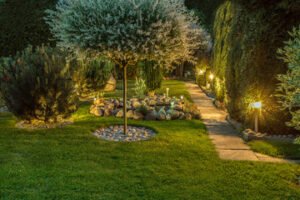You will only want to hire professionals for any kitchen remodeling if you are a skilled DIYer. The complex plumbing and wiring required for a remodel is not for the novice.

When interviewing contractors, ask to see a portfolio or examples of projects they have done. Also, request client references. Contact Kitchen Remodeling Tacoma WA now!
A kitchen remodel is a popular home improvement project that can enhance the aesthetics and functionality of the space. It can include replacing cabinets, countertops, appliances and fixtures as well as reconfiguring the layout for greater efficiency and appeal. Remodeling can also involve adding features like an island or eat-in area, which increase seating and socialization opportunities.
Choosing a design style that complements the rest of your home is an important aspect of kitchen remodeling. A cohesive design can create a seamless flow between the kitchen and dining or living areas. It can also help create a sense of warmth and depth.
The layout of a kitchen is also important, as it can have an impact on how the space is used and the ease with which tasks are completed. Consider rearranging the kitchen work triangle, which refers to the distance between the sink, stove and refrigerator, to save time and energy when cooking.
A kitchen remodel can also include upgrading to newer, more efficient appliances, which can reduce utility bills and increase performance. It is also a good opportunity to add features that promote sustainability and eco-friendly living, such as a programmable thermostat and smart lighting.
Layout
One of the most important kitchen remodeling decisions is layout. A well-thought-out floorplan can help maximize storage space and create a functional work area that fits your family’s needs and lifestyle. The kitchen layout also includes the placement of appliances, cabinets, and counters. For example, a L-shaped kitchen offers flexibility in placing cooktops, sinks and refrigerators to best suit the overall layout. Other considerations include traffic pathways and adequate workspace to ensure efficiency when cooking. In addition, effective lighting is crucial to prevent shadows that may obscure tasks and increase safety risks.
Whether you’re considering a full renovation or a partial remodel, the scope of your project will influence the type of materials and finishes that are selected. For example, a full renovation can involve moving walls and plumbing lines, while a partial remodel may include painting and refinishing cabinets.
While you can choose to customize your kitchen, keep in mind that over-customization can limit the appeal of your home to future buyers. For this reason, it’s often a good idea to stick to design trends that will continue to appeal to a broad range of consumers. You can still add personal touches such as unique artwork and colorful accents, but be sure to use neutral colors and avoid trendy elements that will quickly go out of style.
Appliances
Many older kitchens have inefficient appliances, fixtures and lighting that consume a lot of energy. Upgrading to energy-efficient models during a remodel reduces utility bills and reduces the environmental impact of cooking at home. Adding new windows, skylights and insulation also lowers heating and cooling costs.
Creating an efficient workflow in your kitchen also makes it easier to get tasks done. A new layout can eliminate bottlenecks by rearranging cabinets, removing barriers or adding extra storage options. A kitchen island, second sink or pantry can provide added functionality and a place for your favorite cookware and dishes.
The right kitchen can inspire healthier eating habits. In fact, two-thirds of homeowners report improved diets after a kitchen remodel. The kitchen is where most meals are made and consumed, so it’s important to make it as comfortable and inviting as possible.
Many people are choosing to add green features to their homes, and the kitchen is a great place to start. Upgrading to energy-efficient refrigerators and dishwashers is a simple way to go green, and it can save you money on your utility bills. You can also choose eco-friendly materials for your countertops, cabinets and flooring, such as bamboo or reclaimed wood.
Countertops
Countertops are the workhorses of kitchens and bathrooms, demanding durability, function and style. But countertops can also serve a variety of specialized tasks like serving bars, desks and eat-at counters. A savvy remodeler considers the entire counter design, from the height to the materials and edges.
Quartz is a popular countertop choice for its versatility and beauty. Made from engineered quartz crystals that are bound with a resin-based product, it is available in an almost endless array of looks and is extremely durable and heat resistant. Quartz is also nonporous, meaning it resists the spread of bacteria and germs.
Tile counters are still a viable option and come in a wide range of styles, from classic squares to trendy hexagons. They can also be more budget-friendly than natural stones, though grout lines can become dirty and dingy quickly if not regularly cleaned.
Wood is another versatile and stylish choice, but be aware that it may swell and crack with humidity changes. It is a good work surface but requires regular resealing and refinishing. It is a great surface for a cook’s knife and can be enhanced with decorative edges or a custom-built cutting board. It’s also a good material for counter-height islands, as it provides more knee room and can incorporate built-in stools with power outlets.
Cabinets
Cabinets are the largest component of a kitchen and play a critical role in the room’s functionality and visual appeal. They’re also an opportunity to make a strong design statement and infuse personality, from glossy backsplashes in playful patterns to eye-catching drawer pulls.
Wall cabinets, often called high cabinets or upper cabinets, create bountiful storage and a dramatic vertical look in any room. They’re an integral part of most remodels and come in a wide range of sizes, from 12 inches deep to as tall as 96 inches.
Cupboards and cupboard doors provide storage for linens like towels and sheets, and can be used to display glassware, dishes, or food. They’re usually made of wood and can be designed with different styles, such as recessed or raised panels.
Cabinets come in a variety of materials, including solid wood, MDF, or plywood with a clear finish. Solid wood is the highest quality and most expensive, while MDF and plywood are cheaper options that may need to be replaced sooner than solid-wood options due to abrasions and moisture exposure.
Flooring
A kitchen remodel demands an investment of time and money. It’s crucial that you choose materials and designs that balance function with aesthetics.
Durability is a key factor to consider when choosing flooring for your kitchen. Your floors must be able to withstand spills, heavy foot traffic, regular cleaning, and dropped items. In addition, they should be able to resist heat and water damage.
Ceramic and porcelain tile are classic choices for kitchens, as they’re easy to clean and stain-resistant. Luxury vinyl plank (LVT) is another popular option. It resembles wood and stone, blending well with most aesthetics, but it’s more durable than hardwood and costs less.
Natural hardwood adds a timeless, refined aesthetic to your kitchen, especially if you select an oak or mahogany variety. However, it requires more upkeep than other flooring options. It needs to be resealed and refinished at least every ten years to prevent moisture damage.
A less expensive alternative to natural wood is stained concrete. It offers a sleek, modern look that can be tailored to fit any style. Stained concrete is also highly durable and can be sealed to make it waterproof. This is a good choice for homes with concrete subfloors or that have an existing concrete slab.
Lighting
Kitchen remodeling is a large-scale project that involves major changes to the space’s layout and fixtures. It’s often done to improve the function and appeal of the room, but it can also increase the value of your home. The kitchen is where family and friends gather, so it should be a place that’s both beautiful and functional.
The right lighting can make your kitchen look bright and inviting. Use recessed ceiling fixtures to provide ambient light, pendant lights over islands or dining areas, and under-cabinet options for task lighting. Consider dimmable options for added versatility.
A new backsplash can be a stylish feature that protects your walls from spills and food stains while adding a splash of color or pattern. Choose durable materials like quartz, recycled glass or ceramic tile that will stand up to frequent cleaning.
A secondary sink can be a useful addition to a larger kitchen, especially for prep work or cleaning dishes. It can also be a great spot to rinse vegetables or fill water bottles. Consider a sink in an open concept living area, butler’s pantry or basement rec room for a versatile and convenient space. You can even install a bar sink to serve drinks and appetizers at an informal gathering.



